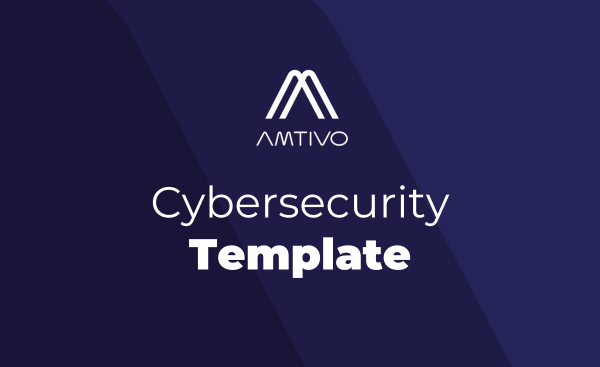Implementing the Requirements of ISO/IEC 27001:2022 To Help Demonstrate Conformance and Achieve Certification
To successfully achieve and retain ISO/IEC 27001 certification, it is a critical success factor for organizations to properly understand its technical and mandatory requirements. As a result, they must establish, operate, maintain and continually improve a conformant Information Security Management System (ISMS) in an effective and efficient manner.
The following information explores ISO/IEC 27001, providing insights into the standard’s clauses and controls and their requirements to achieve conformance and also explains the documentation your ISMS will be audited against during an ISO certification audit. It focuses on the technical requirements of ISO 27001—ideal if you are ready to learn more about the specifics.
If you’re just starting out and looking for a high-level overview of what ISO 27001 is and why it matters, we recommend heading over to our Beginner’s Guide to ISO 27001 instead.
- Summary insights into ISO/IEC 27001 requirements
- ISMS management components
- Annex A information security controls reference
- Key documents auditors commonly reference
- Useful resources
- Get started on your ISO/IEC 27001 certification journey
Summary Insights Into ISO/IEC 27001 Requirements
ISO/IEC 27001 is divided into two components, or parts:
1. Mandatory “Management” or “ISMS” component (Clauses 4 to 10)
This part contains approximately 140-150 requirements for setting up, running, maintaining, and continually improving an Information Security Management System. These are the core requirements that every organization must follow to be in line with the standard.
2. Annex A information security controls (Clauses 5 to 8)
This part contains ninety-three potential controls – practical measures or actions that help reduce risks to information and systems. You do not need to use all of them. The ones you choose depend on what comes out of your risk assessment and planning process (Clause 6).
Although ISO/IEC 27001 includes Clauses 1 to 3, these clauses do not contain any conformance requirements. They explain the scope, give references, and define terms. They do not include any requirements for certification, meaning they can be safely ignored when focusing on the core requirements.
The table below summarizes ISO/IEC 27001’s Clauses 4 to 10 and the Annex A information security controls reference Clauses 5 to 10—including identification of mandatory documentation.
|
ISMS/Management Component: |
||
|---|---|---|
|
Clause |
Summary of ISO/IEC 27001 Requirements |
Mandatory-Only Documentation |
|
Clause 4 Context of the organization |
This clause in ISO/IEC 27001 asks organizations to consider both external and internal factors that could affect how they manage information security. It also asks you to understand the needs and expectations of stakeholders, and to identify any key relationships or dependencies. All of this is considered when defining the scope of your ISMS. Your ISMS scope sets the boundaries for which data and information will be protected under the system, and which will not. This applies no matter where the information is stored or accessed, whether it is in your offices, in the cloud, or from a remote location. ISO/IEC 27001 refers to the scope as the “boundary and applicability” of the ISMS. In simple terms, it is about being clear on what is included in your security efforts, and what sits outside of them. |
The ISMS Scope |
|
Clause 5 Leadership |
ISO/IEC 27001 is frequently referred to as a “top-down management driven” management system. One of the standard’s key clauses outlines what is expected from top management. It requires them to show clear leadership and commitment, set and share a high-level Information Security Policy, and make sure that everyone involved in the ISMS knows their roles, responsibilities and authority. In short, it is about strong governance and clear communication from the top. |
An Information Security Policy |
|
Clause 6 Planning |
As the clause title indicates, organizations are required to plan the establishment and implementation of their ISMS. This involves identifying and addressing risks and opportunities, assessing, and treating information security risks, setting clear information security objectives, and planning for change. These objectives should be communicated effectively and, where practical, monitored and measured, taking into account security requirements as well as the outcomes of risk assessments and treatments. Plans should be developed to achieve these objectives, detailing the “what,” “how,” “when,” and “who.” Additionally, any changes to the ISMS must be managed in a planned and controlled manner. |
Information security risk assessment process Information security risk treatment process Information security objectives |
|
Clause 7 Support |
Another well-named clause in ISO/IEC 27001 sets out what is needed to properly support an ISMS. This includes making sure the organization provides enough time, people, funding, information, and infrastructure to run it effectively. It also covers the competence of personnel, with a requirement to take action if someone lacks the necessary skills. Everyone in the organization must have a basic level of information security awareness. On top of that, communication around the ISMS must be planned and purposeful, and the management of ISMS-related documents (known as “documented information”) needs to be handled in a clear, efficient, and effective way. |
Evidence of competence (for all relevant ISMS roles) |
|
Clause 8 Operation |
Building on previous clause requirements which establish and implement an ISMS, organizations now need to operate and maintain (including continual improvement) their ISMS. Clause 8 focuses on putting the ISMS into action. It outlines what is needed to run the system day to day and make sure it meets the standard’s requirements and supports your organization’s ISMS objectives. This includes planning, implementing, and controlling all relevant processes. To do this, you need to set clear criteria for how processes should work and make sure they are followed. The clause also highlights the need to manage changes effectively, oversee any outsourced processes, and keep up with ongoing risk assessment and treatment. |
The results of operationalised risk assessment and treatment Additionally, optional documentation can be generated to underpin organizational confidence that ISMS processes are carried out as planned |
|
Clause 9 Performance evaluation |
This clause focuses on using data and insight to support continual improvement of the ISMS. It sets out requirements for monitoring, measuring, analysing and evaluating how the system is performing. The organization decides what to monitor, how to do it, when it should happen and who is responsible. It also covers the need for internal audits and regular management reviews at planned intervals. In short, this clause asks organizations to review how well their ISMS is working, and whether it continues to be suitable, effective and fit for purpose. |
The results of monitoring, measurement, analysis and evaluation A fully documented internal audit program The results of ISMS review by Top Management |
|
Clause 10 Improvement |
Building on the results from performance evaluation in Clause 9, this final mandatory clause focuses on continual improvement of the ISMS. It requires organizations to regularly review how suitable, adequate and effective their ISMS is. It also covers how to handle nonconformities when something doesn’t meet the standard by taking the right corrective action. Nonconformities might be spotted during internal or external audits, reviews of security incidents, or day-to-day observations. Addressing these issues properly is a key part of keeping the ISMS effective over time. |
Nonconformities (the nature of), corrective actions and their results |
|
Annex A Information Security Controls Reference |
||
|---|---|---|
|
IMPORTANT NOTE: The controls provided in Annex A are NOT MANDATORY as the standard specifies that organizations can design their own controls as required or identify them from any source—of course including from Annex A. Irrespective of the source of an organization’s controls, they are only implemented when determined necessary to implement risk treatment options (in response to analyzed unacceptable risk to the confidentiality, integrity and availability of organizational information and information processing facilities). |
||
|
Clause |
Summary of Requirements |
Example, typical or suggested/inferred documentation |
|
Clause 5 Organizational controls (37 Controls) |
This group includes 37 controls that are organizational in nature. They focus on managing risks linked to governance, management, and day-to-day operations rather than technical systems, people, or physical security. Like all Annex A controls, these can be preventive, detective and/or corrective in how they work. Examples include controls related to information security governance (policies, procedures, roles and responsibilities, segregation of duties, contacts, etc.), threat intelligence, asset management, Identity and Access Management (IAM), supplier relations, information security incident management, legal, statutory, regulatory and contractual requirements (including IP, record and PII protection, independent review and compliance). |
Information security and topic-specific policies Inventory of assets Rules for acceptable use of assets (mandatory) Information classification and labelling procedures Rules for physical and logical access Supplier agreements (to include organizational information security requirements) Information security incident management procedures (mandatory) Information security continuity (plans, testing, etc.) Legal, statutory, regulatory and contractual requirements and approach to compliance (mandatory) Documented information process and information process facilities operating procedures (mandatory) |
|
Clause 6 People controls (8 Controls) |
This section includes 8 controls that are HR-related. They focus on managing risks connected to people in the organization and how they interact with information and the systems used to process it. Like all Annex A controls, these can be preventive, detective and/or corrective in how they work. Examples include controls related to pre-employment (screening, terms and conditions, confidentiality/NDAs), during employment (awareness, disciplinary process, remote working, incident reporting) and personnel termination (responsibilities after termination or change). |
Personnel terms and conditions of employment (including information security responsibilities) Formal disciplinary process Confidentiality or non-disclosure agreements (mandatory) Remote working requirements |
|
Clause 7 Physical controls (14 Controls) |
Contains a selection of 14 controls designed to primarily respond to or modify risks associated with the physical site and environment. Like all Annex A controls, these can be preventive, detective and/or corrective in how they work. Examples include controls for physical perimeter, entry and the internal security of offices, rooms and facilities (all including monitoring), procedures for working in secure areas, protection of all physical assets (onsite and offsite), equipment maintenance, secure disposal and clear desk and screen. |
Building and services schematics Procedures for working in secure areas Rules for clear desks and screens Rules for the management of the lifecycle of storage media (can be related to organizational asset management controls, including classification and labelling) Equipment maintenance agreements and records (can be related to organizational supplier relation controls) |
|
Clause 8 Technological controls (34 Controls) |
Contains a selection of 34 controls designed to primarily respond to or modify risks associated with the use of technology. As with all Annex A controls, they have preventive, detective and/or corrective attributes. Examples include controls for IT operations (configuration management, capacity management, end point device management, information and utility access restrictions, authentication, malware protection, technical vulnerability management, backup, data masking and leakage prevention, redundancy, logging and monitoring), network operations (network security, services, segregation, filtering), cryptography, secure software development (lifecycle, policy, principles, coding, testing, outsourcing) and change management. |
Technical vulnerability management process and procedures Configuration management (mandatory) Backup policy Logging and monitoring procedures and activities Network diagrams Rules for secure development (lifecycle and secure coding) Change management procedure or process |
What To Expect From the ISO/IEC 27001 Certification Process
Undertaking ISO/IEC 27001 certification is a strategic investment, helping an organization to improve its information security management.
The journey begins with a Stage 1 Audit by a qualified auditor, who will review the readiness of the ISMS and identify, if necessary, any potential nonconformities. An organization will then implement any necessary changes before continuing the certification process.
Once the identified issues are addressed, the organization will progress to the Stage 2 Audit. On successful completion, they will be awarded ISO/IEC 27001 certification—demonstrating that their organization takes information security seriously and manages it to a recognized international standard.
Amtivo in the U.S. is an ANAB-accredited certification body for ISO certifications, with proven expertise to provide services to support your business “journey” towards successful ISO certifications. (The ANSI National Accreditation Board (ANAB) is the national body with responsibility for the accreditation of certification bodies in the United States).
Key Documents Auditors Commonly Reference
Our Auditors will reference the following documents to audit your ISMS, as set out by the International Accreditation Forum (IAF), International Organization for Standardization (ISO), and the International Electrotechnical Commission (IEC):
|
Standard |
Title |
Purpose (in relation to ISO/IEC 27001:2022) |
|---|---|---|
|
Certifiable standard: |
||
|
ISO/IEC 27001:2022 |
Information security, cybersecurity, and privacy protection—Information security management systems—Requirements |
The core standard that specifies the requirements for establishing, implementing, maintaining, and continually improving an Information Security Management System (ISMS). It is the certifiable standard organizations are audited against. |
|
Supporting standards that auditors often refer to: |
||
|
ISO/IEC 27002:2022 |
Information security, cybersecurity, and privacy protection—Information security controls |
Provides detailed guidance on the controls listed in Annex A of ISO/IEC 27001. Used to help organizations implement and interpret the required security controls. |
|
ISO/IEC 27005:2022 |
Information security, cybersecurity, and privacy protection—Guidance on information security risk management |
Offers comprehensive guidance on risk management tailored for ISMS implementation. It supports the risk assessment and treatment processes required by ISO 27001 (Clause 6.1). |
|
ISO/IEC 27007:2020 |
Guidelines for information security management systems auditing |
Provides guidance on auditing ISMSs and on the competence of ISMS auditors. It complements ISO 19011 and is primarily used by auditors performing ISO 27001 audits. |
|
Audit governance standards that guide how certification bodies operate: |
||
|
ISO/IEC 27006-1:2024 |
Requirements for bodies providing audit and certification of information security management systems |
Specifies requirements for certification bodies performing ISO/IEC 27001 audits to ensure consistency, competence, and impartiality. It operationalizes ISO/IEC 17021-1 for ISMS certification. |
|
ISO/IEC 17021-1:2015 |
Conformity assessment—Requirements for bodies providing audit and certification of management systems—Part 1: Requirements |
The generic framework for all management system certification schemes. It defines how certification bodies must manage impartiality, competence, audit processes, and certification decisions—applicable to ISO 27001 through ISO/IEC 27006-1. |
|
ISO 19011:2018 |
Guidelines for auditing management systems |
Provides generic principles and guidance for auditing all types of management systems. It serves as the foundation for audit processes, upon which ISO/IEC 27007 builds for ISMS-specific auditing. |
Contact Us to Get Started
Start your journey to ISO 27001 certification today—get a quote or contact our team to discuss your needs.










